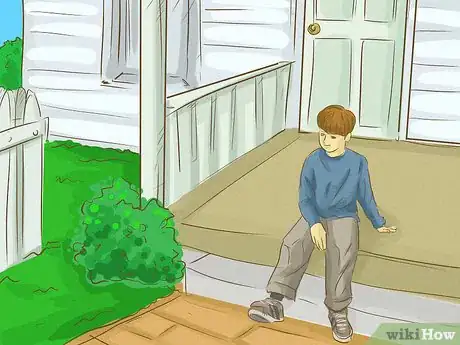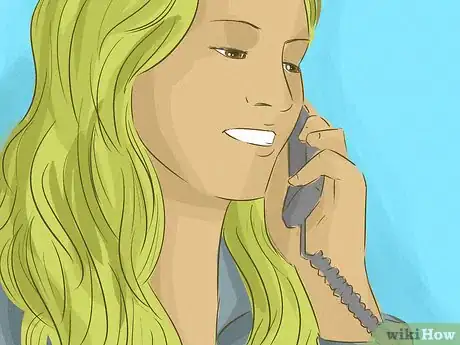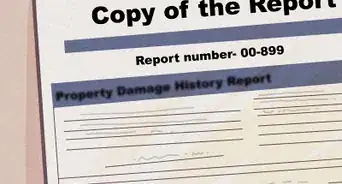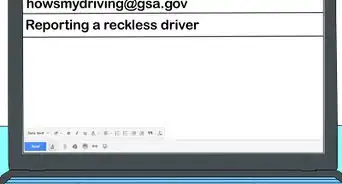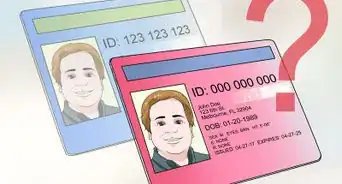X
This article was co-authored by Clinton M. Sandvick, JD, PhD. Clinton M. Sandvick worked as a civil litigator in California for over 7 years. He received his JD from the University of Wisconsin-Madison in 1998 and his PhD in American History from the University of Oregon in 2013.
This article has been viewed 28,117 times.
You may want to contact Child Protective Services (CPS) for a variety of reasons. The most common reason is to report a suspicion of child abuse or neglect. Other reasons include calling to apply for a job or to do business with the agency. Whatever your reason for calling, you should be able to contact CPS quite easily.
Steps
Part 1
Part 1 of 2:
Reporting Suspected Abuse or Neglect
-
1Determine if you are a mandatory reporter. All states require certain individuals to report suspected abuse or neglect. These people are often professionals who come into contact with children as part of their jobs. The following are typically mandatory reporters:[1]
- teachers, principals, and other school personnel
- doctors, nurses, and other healthcare professionals
- counselors, therapists, and other mental health professionals
- social workers
- law enforcement officials
- providers of child care
-
2Identify evidence of abuse. You do not need to know with 100% certainty that a child is being abused. Instead, reasonable cause is sufficient.[2] Nevertheless, you should be prepared to identify specific signs of abuse. Common “red flags” include:[3]
- the child is inappropriately left alone or unattended
- the child fears returning home
- there are bruises or other injuries in multiple locations or on both sides of the body
- the child has frequent or unexplained injuries, especially in a distinctive pattern (such as grab marks)
- the child lacks personal hygiene (dirty and/or torn clothes)
- the child exhibits sexual knowledge that is inappropriate for his or her age
- the child is in pain and has difficulty sitting or walking
- the child is consistently hungry and steals or begs for food
- serious illnesses are left untreated
Advertisement -
3Decide whether to report anonymously. Every state allows people to report anonymously; however, the agency may discourage anonymous reporting. If you are a mandatory reporter, then you may or may not be able to report anonymously. Each state has different requirements.
- If you do not want to be identified, then you should remain firm and insist on anonymity. You might also look into reporting online. You may find it easier to maintain your anonymity if you are not speaking to another person.
-
4Search for a child abuse hotline. Most states have a hotline for reporting child abuse.[4] The Child Welfare Information Gateway website maintains a list of state hotline numbers at https://www.childwelfare.gov/organizations/?CWIGFunctionsaction=rols:main.dspROL&rolType=custom&rs_id=5. This list is continually updated. It also includes online reporting options, if available.
- You may also use the Childhelp hotline, 1-800-422-4453. This hotline can connect you to the correct state agency when the number is unknown.
-
5Call CPS. When you call, be prepared to answer questions about the child and the reason you are reporting. Try to answer in a concrete and specific manner. You do not need to know the answer to every question to call. Common questions include:
- What is your relationship to the child?
- What is the child’s name, age, and address?
- What is the name of the suspected abuser? What is his or her relationship to the child?
- What are the parents’ names, addresses, and telephone numbers?
- Can you describe the type of abuse, when it occurred, and why you think it happened?
- Where is the child currently?
- How do you assess the child’s current level of safety?
- Do you have the names and contact information for other witnesses?
-
6Report online. Some states may allow online reporting. In Florida, for example, you have the option, which is available at http://www.myflfamilies.com/service-programs/abuse-hotline.
- To check if your state allows online reporting, visit the website for your state’s CPS. You can find it on the list from the Child Welfare Information Gateway website.
-
7Follow up with a written report, if required. Mandatory reporters must often follow up an oral report with a written one. There may be a form that CPS can give you to use. Typically, you will have to report the following information:
- the name of the child
- the child’s whereabouts
- the names and addresses of the parents or guardians
- a description of the child’s condition
Advertisement
Part 2
Part 2 of 2:
Contacting For Business Purposes
-
1Identify your reason for calling. Before picking up the phone, you should quickly identify the reason for your call to CPS. Jot down the reason. Perhaps you are calling to follow up on an application or to discuss other business. You should be able to clearly articulate why you are calling in case you are sent to an answering machine and need to leave a message.
- You should also identify if there is a specific person in the agency that you are supposed to contact. Your phone call will go smoother if you know the name of a direct contact.
-
2Perform a web search. You can try to find a phone number in your Yellow Pages, but if that is not successful then you can look for a phone number or email by searching online. If you are looking for a particular person, type in that person’s name and “Child Protective Services.”
- If you don’t have a particular person you need to contact, then simply search for the office location and “Child Protective Services.” This search can pull up a general number for the entire office or switchboard.
- if you are looking for job opportunities, then you should search the CPS website. Many agencies post job listings on their website. An agency may also post information regarding other business opportunities. A contact number should be provided with these advertisements.
-
3
-
4Call. You can call the direct line or the switchboard number. If you are sent to voicemail, then be prepared to leave a message.
- If you can find an email address and you feel more comfortable contacting CPS by email, then go ahead and send the email.
-
5Leave your contact information. No matter who you speak to, be sure to leave your name and a contact number so that you can be called back. Also be sure to state what times are best to reach you.
Advertisement
References
- ↑ https://www.childwelfare.gov/pubPDFs/manda.pdf
- ↑ https://www.childwelfare.gov/pubPDFs/manda.pdf
- ↑ http://www.ocfs.state.ny.us/ohrd/ccg/ConcernedCitizensGuide.pdf
- ↑ https://www.childwelfare.gov/topics/responding/reporting/mandated/
- ↑ https://phoneboy.com/2257/does-operator-assistance-still-exist/
- ↑ https://phoneboy.com/2257/does-operator-assistance-still-exist/
About This Article
Advertisement

